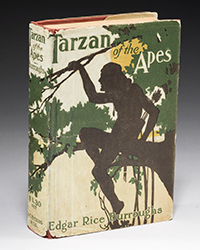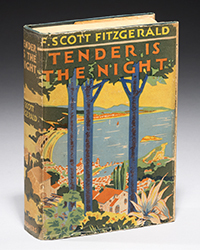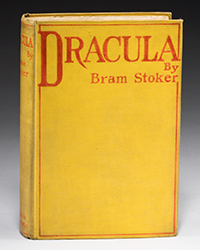Doyle has landed on their feet as the field has been adjusting to the changing market and the Coronavirus catashrophe. Net net the company is stronger and I believe Doyle will be PLAYERS. Based on my perception I asked Edward Ripley-Duggan to tell us how things are going. Ted is very literate and this is his well considered reply.
Doyle has long incorporated online bidding in its auctions, but since July 2018 the Rare Books Department has been conducting timed, online-only book auctions. An initial impetus for this came with the accession of the Arnold “Jake” Johnson collection of sporting books; a vast collection formed over many years by a recently deceased Montana-based collector of sporting books and related topics. Jake Johnson avidly pursued materials pertaining to angling, big game hunting, and indeed all aspects of hunting, primarily from the 18th to early 20th century. Since explorers almost invariably hunted, the collection incorporated a great deal of travel and exploration; as the topic appealed to the publishers of color-plate books in the nineteenth century, there were a diverse range of color plate books in aquatint.
By the beginning of this year, we had held roughly ten such auctions and had diversified to include material from other consignors. For instance, in early February, when the Covid-19 virus was still a distant rumor, we put together a very successful sale of material by the illustrator Edward Gorey. The online format allowed us to offer over 200 lots at a wide range of values, and to offer fan-favorite ephemera such as Gorey posters, coffee mugs, and stationery, most of which sold rather well. It was also wonderful to meet collectors and fans of the artist who were drawn to the broad array of items.
While none of these online sales have been of the value of our semi-annual live main sales (which feature in-person viewing, live auctioneering with phone and internet bidding etc.) there is much to be said for them. We find that auctions devoted to individual themes rather than general sales can produce very strong results for the most desirable items in a collection, and that the focused attention on the subject adds context to the least valuable books—and almost all lots find buyers. Typically, around 85 percent of lots find new homes in the online-only sales, a respectable sell-through rate, to use the argot of the auction world.
This April, we had a large and diverse sale set for the 22nd of the month. The 500+ items included a fine collection of Rudyard Kipling, the estate of the late autograph dealer Gary Combs, and the wonderful collection of illustration art by E.H. Shepard and Beatrix Potter assembled by Mary K. Young. By the time Governor Andrew Cuomo issued his stay-at-home order on March 20 much of the material had been catalogued and was ready for sale. But as the pandemic started to take hold in the U.S., how should we proceed? All options were very seriously considered, including postponement, but who knew what the market might be later in the year?
The solution was simple: as we had a track record of mounting successful Internet-only sales, and that form of auction seemed to be uniquely suited to the situation, we decided that this would be the time to scale up our efforts in online auctions. Consignors were contacted and the potential risks and benefits of the situation discussed: most were content to sell at a time when other auction houses were canceling auctions, with the result that our sales would have a commanding presence in the market. This would also be a time when virtually every collector would be home, voraciously pouring over any catalogue that landed in their inbox, unable to attend fairs, museum exhibitions, or other bibliophile pursuits.
Building on the success of the thematic online sales of the past, the single auction was broken into four wings. The Literature was offered on April 15; the Young Collection and an interesting range of antiquarian material was sold on April 22; the Combs autograph material on the 23rd, the day after; and a fourth auction, offering Travel & Natural History and combining items originating from the collection of Quentin Keynes with an array of books from the Johnson Library will be offered in May (both Johnson and Keynes were outdoorsmen as well as collectors; Keynes had led safaris in Africa; so this felt like a natural grouping).
The literature sale, the first up, was reassuring in its results. 106 lots, with an aggregate estimate of roughly $80,000 to $125,000, were 92 percent sold, with a result (at hammer) of $136,000 dollars, in excess of the high estimate. Several world records for works by Kipling were set during the intense online bidding. A number of new buyers materialized, and the sale was, we felt, an unqualified success. The April 22 Rare Books, Autographs & Maps auction featuring the Mary K. Young Collection also saw vigorous bidding, with a sale total of $546,000 dollars hammer. This included $75,000 for an original work by E.H. Shepard published in The House at Pooh Corner, which exceeded its estimate and suggests the endless possibilities inherent in online auctions. On April 23rd, Autograph Seeker: The Estate of Gary Combs saw a hammer of $108,000, with 94 percent sold, a wonderful result that confirmed our instincts to forge ahead with these auctions. For the three days of sales so far, we had seen results that were on a par, in terms of sell-through rates and result versus estimate, with our usual live sales.
Will traditional auctions return? I’m sure that, once the Covid-19 troubles are past, live viewing before the sale is likely to resume at Doyle, although there are certainly online-only houses who do not offer this feature, and this was the case even before the pandemic. However, I do think it likely that traditional printed catalogues may become few and far between. I also believe that the live auction, with a viewing audience in attendance, will become increasingly uncommon even after the end of social distancing, except perhaps for sales such as high-end fine art, where the theater of the auction helps drive prices. Some auction houses had already made moves in this direction well before the present situation; with one globally prominent firm that, starting in 2019, offered printed catalogues, full viewing, but no live auction for its book sales. The new normal, after the pandemic is merely a bad memory, is likely to be an auction that is predominantly an online event.

![Edward [Ted] Ripley-Duggan](https://ae-files.s3.amazonaws.com/ArticleImages/5370cc20-31d8-4319-998c-09949484d8fa.png)








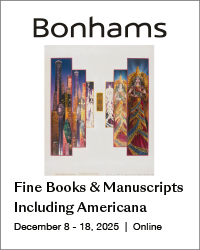

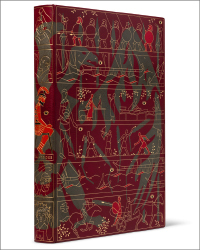

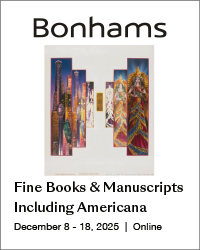
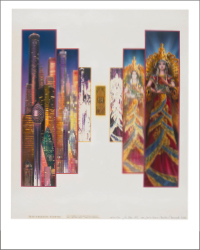
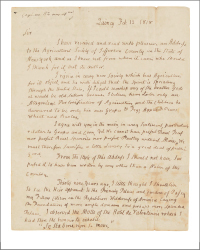

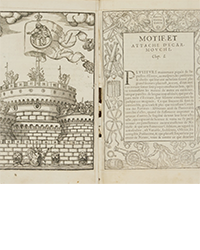
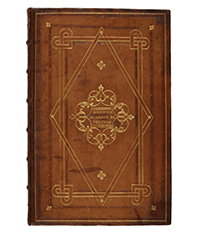
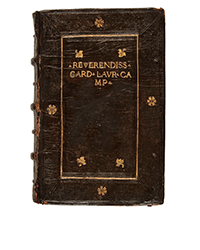
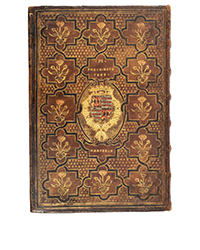

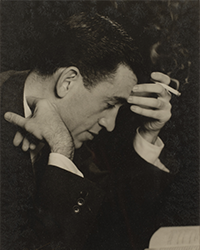
![<b>Sotheby’s, Dec. 16:</b> [Austen, Jane]. A handsome first edition of <i>Sense and Sensibility,</i> the author's first novel. $60,000 to $80,000. <b>Sotheby’s, Dec. 16:</b> [Austen, Jane]. A handsome first edition of <i>Sense and Sensibility,</i> the author's first novel. $60,000 to $80,000.](https://ae-files.s3.amazonaws.com/AdvertisementPhotos/9a74d9ff-42dd-46a1-8bb2-b636c4cec796.png)
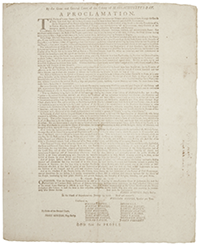

![<b>Heritage, Dec. 15:</b> John Donne. <i>Poems, By J. D. With Elegies on the Author's Death.</i> London: M[iles]. F[lesher]. for John Marriot, 1633. <b>Heritage, Dec. 15:</b> John Donne. <i>Poems, By J. D. With Elegies on the Author's Death.</i> London: M[iles]. F[lesher]. for John Marriot, 1633.](https://ae-files.s3.amazonaws.com/AdvertisementPhotos/8caddaea-4c1f-47a7-9455-62f53af36e3f.jpg)
